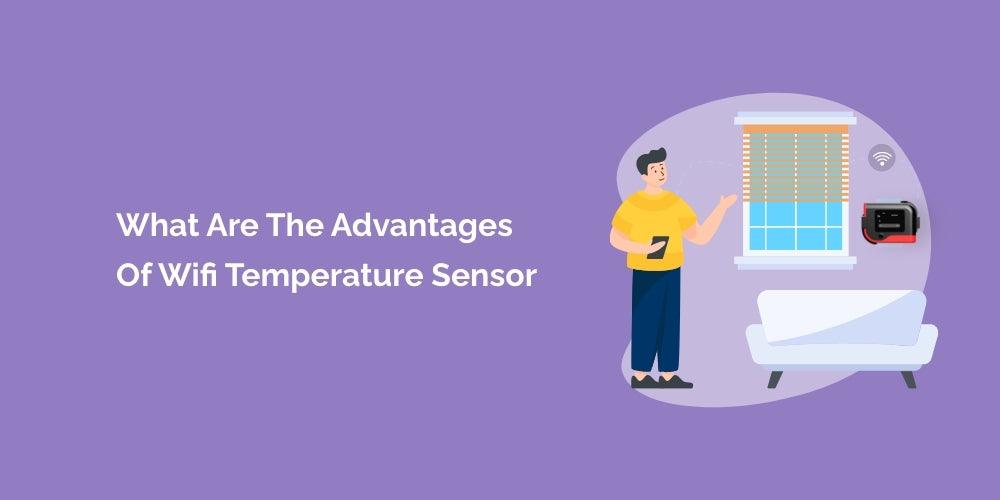Introduction
Wi-Fi temperature sensors are becoming increasingly popular in various industries and applications due to their many advantages. These sensors use wireless technology to transmit temperature data, allowing for real-time monitoring and remote access to temperature information. This article will discuss some key advantages of using a Wi-Fi temperature sensor, including its convenience, accuracy, cost-effectiveness, scalability, and security.
Take advantage of the convenience of temperature monitoring!
One of the main advantages of a Wi-Fi temperature sensor is the ability to access temperature data remotely. With traditional temperature sensors, such as those connected to a wired network, accessing the data requires physically going to the location where the sensor is located. With a Wi-Fi temperature sensor, the data can be accessed from anywhere with an internet connection, allowing for remote monitoring and control. This is particularly useful for monitoring temperatures in remote locations or areas that are difficult to access.
Wi-Fi temperature sensors often come with user-friendly mobile apps or web interfaces that allow you to access and analyze the temperature data from your smartphone, tablet, or computer. This feature makes it easy to check the temperature of your refrigerator, freezer, or other temperature-sensitive equipment, even when you're away from the office or on vacation. This convenience allows you to take the necessary actions to maintain the desired temperature even when you are away.
Also Read: How is a WiFi Temperature Sensor useful for Industries & Home?
Experience a new level of temperature accuracy.
Another advantage of WiFi temperature sensors is that they can receive real-time temperature data. Traditional temperature sensors often delay transmitting data, which can lead to inaccuracies. Wi-Fi temperature sensors transmit data in real time, ensuring that temperature information is accurate and up to date. This is especially important for industries such as healthcare, food and beverage, and pharmaceuticals that rely on precise temperature control to maintain the quality and safety of their products. With accurate temperature monitoring, you can ensure that you can take corrective action if the temperature deviates from the desired range.
Also Read: Why Do You Need a Remote Temperature & Humidity Sensor?
temperature monitoring on a shoestring budget!
Wi-Fi temperature sensors are also cost-effective in comparison to traditional temperature sensors. Wired temperature sensors require additional costs for installation, such as the cost of running cables and hiring a professional to install them. Wi-Fi temperature sensors, on the other hand, can be easily installed by anyone with basic technical knowledge, and they do not require the additional costs of running cables. Additionally, Wi-Fi temperature sensors often have a lower total cost of ownership over time because they do not require the same level of maintenance as wired sensors.
Easily scale temperature monitoring with Wi-Fi sensors.
Wi-Fi temperature sensors are also highly scalable. They can be easily added or removed from the network as needed, allowing you to expand or reduce the number of sensors as your needs change. This scalability allows you to adapt to changing conditions, such as an increase or decrease in the size of your facility or changes in the temperature requirements.
Ensure you're keeping an eye on temperatures with security monitoring.
Wi-Fi temperature sensors also offer a high level of security. They can be configured to use encryption, passwords, and other security measures to protect against unauthorized access. Only authorized personnel can access the temperature data and take the necessary actions. This security is particularly important for sensitive industries such as healthcare and pharmaceuticals, where temperature data breaches can result in serious consequences.
Also Read: How a large IT company saved millions by monitoring data centre temperature
Frequently Asked Questions
- How do Wi-Fi temperature sensors work?
Wi-Fi temperature sensors work by using wireless technology to transmit temperature data over a network. The sensor uses a thermistor, thermocouple, or RTD to measure the temperature, and then it sends the data wirelessly to a central hub or cloud-based platform. From there, the data can be accessed and analyzed remotely.
- What industries can benefit from Wi-Fi temperature sensors?
Wi-Fi temperature sensors can benefit many industries, including healthcare, food and beverage, pharmaceuticals, HVAC, and industrial manufacturing. These sensors can be used to monitor and control the temperature of products, equipment, and environments, ensuring that they are maintained at the appropriate levels for safety and quality.
- Are Wi-Fi temperature sensors accurate?
Yes, Wi-Fi temperature sensors are accurate. They transmit data in real-time, ensuring that temperature information is up-to-date and accurate. Furthermore, many Wi-Fi temperature sensors include built-in calibration to ensure accuracy.








